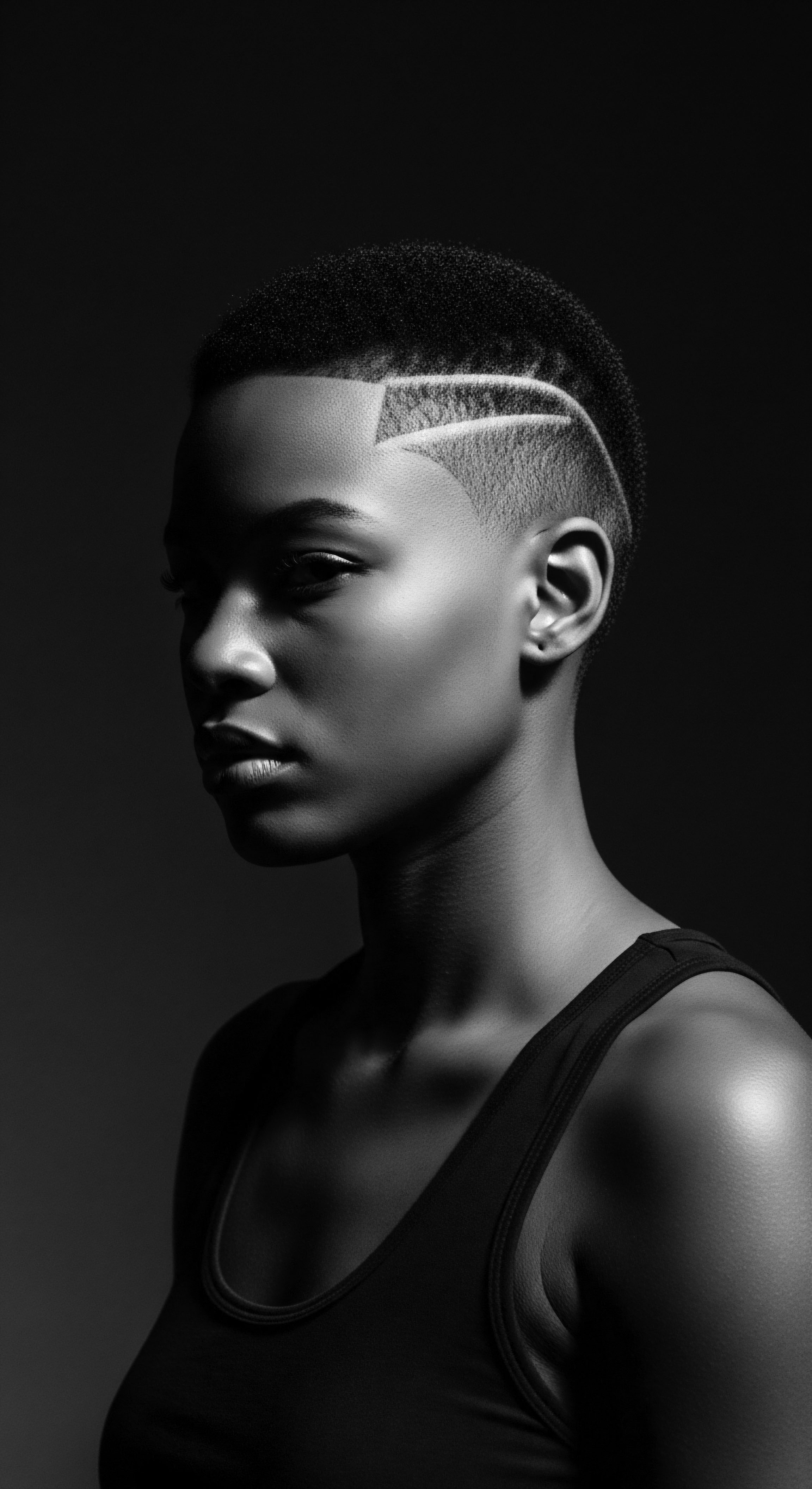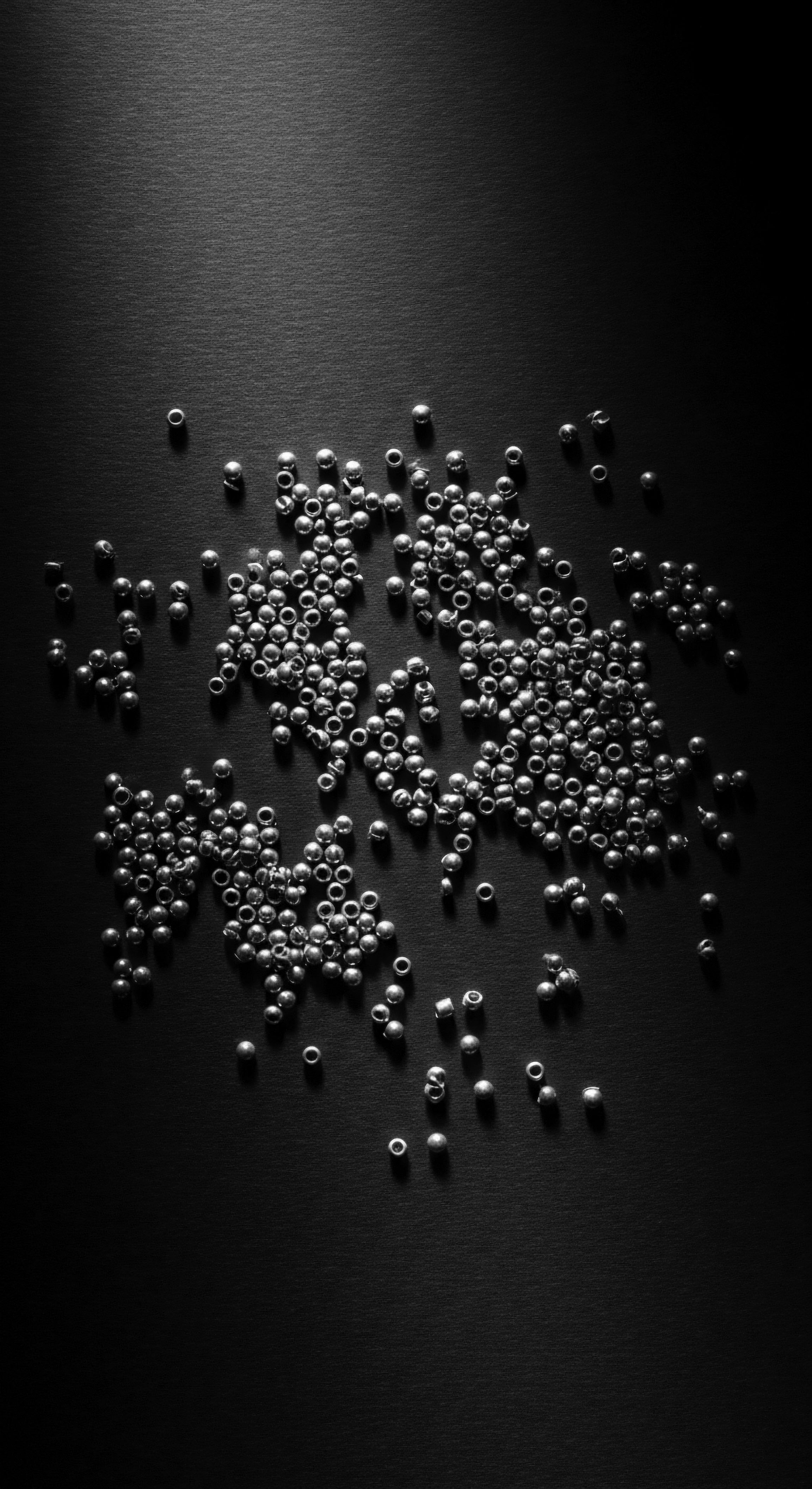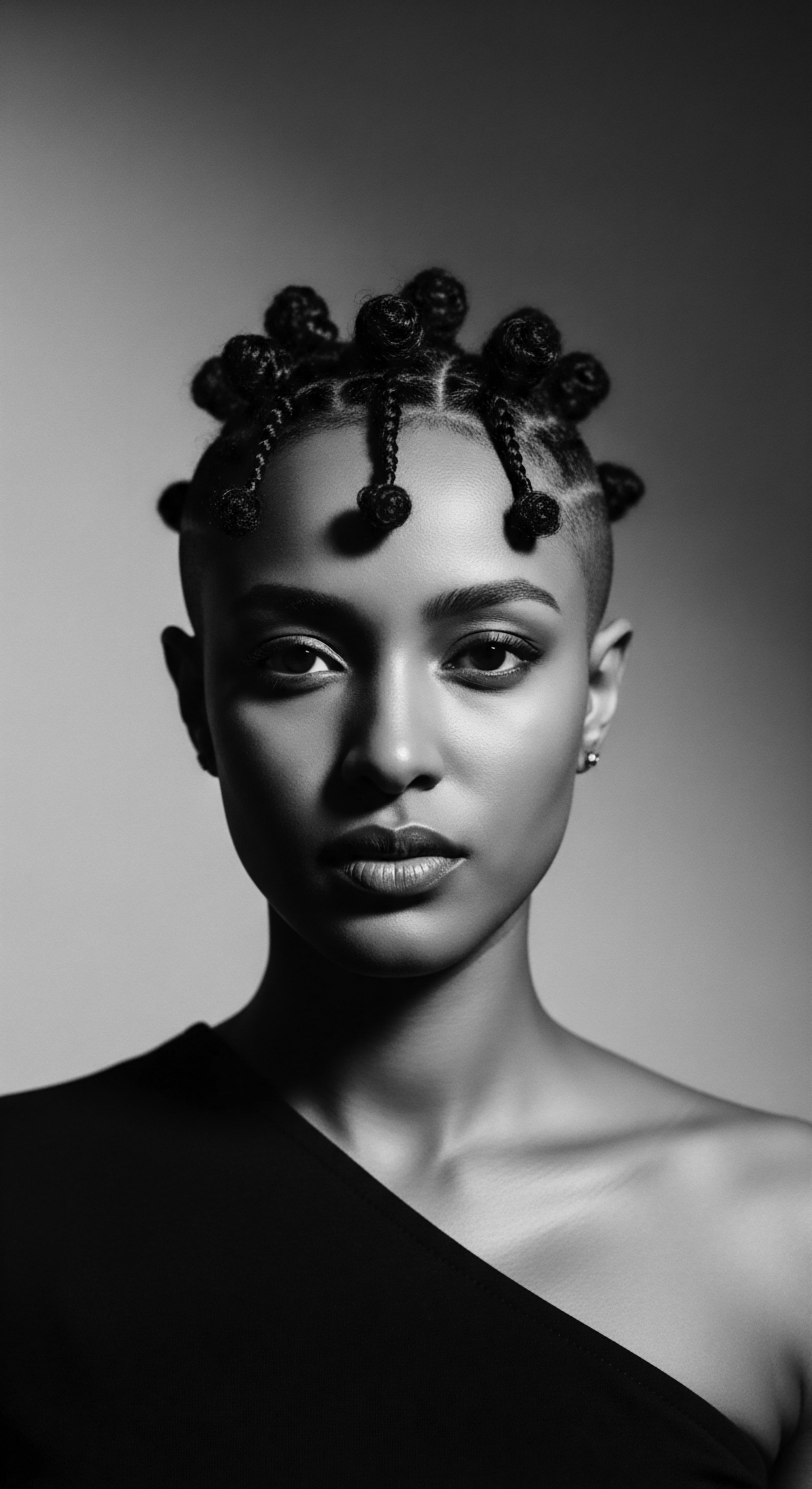
Roots
The story of shea butter in textured hair care does not begin in sterile laboratories or marketing boardrooms. It unfolds, rather, across the vast, sun-drenched savannahs of West Africa, a sacred landscape where the Shea Tree, Vitellaria paradoxa, stands as a quiet guardian of ancestral wisdom. For generations uncounted, this resilient tree, often called the “Tree of Life” by those who live among its enduring presence, has offered its opulent fruit, a testament to its deep roots in communal sustenance and spiritual reverence. Our exploration journeys into the very core of this inheritance, examining how the elemental composition of shea butter has always aligned with the needs of textured hair, long before scientific scales could measure its lipids or microscopes could reveal its cellular embrace.

The Tree of Life Echoes from Ancient Earth
The genesis of shea butter’s place in hair care is etched into the very soil of the Sahel Belt, where archaeological records bear silent witness to its ancient prominence. Excavations at sites such as Kirikongo in western Burkina Faso reveal the persistent presence of shea nut processing dating back to at least A.D. 100, underscoring its enduring role in daily existence for well over a millennium (Gallagher et al. 2016).
This deep archaeological footprint tells a powerful story, one where the use of shea butter was not merely an act of survival, but a considered practice, woven into the fabric of life, its properties intuitively understood by those who depended upon the land. The very structure of the Shea Kernel, holding within it a rich vegetable fat, was recognized for its unique ability to nourish and preserve in arid climates.
The story of shea butter in textured hair care is deeply etched into the ancient landscapes and enduring cultural practices of West Africa.
Consider the biology of textured hair itself. Its characteristic coils and bends, while beautiful and expressive, present a unique architecture. The natural oils, sebum, produced by the scalp, face a more challenging journey traversing the curvilinear path of a textured strand from root to tip. This inherent structural quality means textured hair often requires additional external assistance to maintain its moisture balance and flexibility.
It is here that the wisdom of ancestral practices converges with the very nature of the shea tree’s bounty. The traditional extraction methods, passed down through matriarchal lines, yielded a butter abundant in fatty acids like Oleic Acid and Stearic Acid, alongside an extraordinary unsaponifiable fraction – compounds that do not convert into soap upon contact with alkali, holding potent medicinal and restorative qualities (Muotono et al. 2017).

Ancestral Wisdom and Hair’s Anatomy
The understanding held by our ancestors, though not articulated in modern scientific terms, possessed an empirical depth. They perceived the butter’s power to shield hair from the harsh elements, to render strands pliable, and to bestow a vibrant luminosity. This deep knowledge found its way into daily applications. Shea butter, a solid at cooler temperatures but melting at body warmth, acted as a protective balm, forming a gentle, breathable barrier on the hair shaft.
This action helped to seal the cuticle, minimizing moisture loss in environments where water was a precious commodity. The inherent lipid content served as a natural emollient, softening the hair, making it more resilient to the stresses of daily manipulation and styling. This fundamental alignment between shea’s composition and textured hair’s needs represents an early, intuitive science born of close observation and generational experience.
The essential lexicon of textured hair, passed down through oral traditions, often includes terms that describe not just the aesthetic qualities of hair but also its health and vitality, attributes shea butter was understood to foster.
- Ori ❉ A Yoruba term for shea butter, also meaning “head” or “consciousness,” suggesting its holistic importance.
- Nkuto ❉ The Twi name for shea butter in Ghana, signifying its widespread use and recognition.
- Karité ❉ A common name for the shea tree, derived from a West African language, reflecting its cultural identity.
The synergy between shea butter’s natural characteristics and the particular requirements of textured hair speaks to a profound ecological harmony, where communities lived in intimate dialogue with their surroundings. This historical understanding forms the essential background for appreciating shea butter’s enduring legacy in hair care.

Ritual
From the ancient groves of the shea tree, its golden bounty emerged not merely as a resource, but as a living component of daily life, imbued with ritual and profound cultural significance. The story of shea butter’s journey into hair care is one deeply connected to communal effort, to the hands of women, and to the practices that bound families and villages together. These were not simply acts of beautification; they were expressions of identity, tradition, and profound care, reflecting a heritage passed through generations.

The Hands That Turn Gold
The creation of shea butter, particularly the unrefined variants revered for their potency, remains a labor-intensive endeavor primarily carried out by women across the Shea Belt. This process, stretching from the careful collection of fallen shea fruits—respecting the tree’s natural cycle—to the elaborate steps of crushing, roasting, grinding, and kneading, is a communal act (Carney & Elias, 2006). It is often performed in shared spaces, with the rhythmic sounds of pounding nuts and the gentle murmur of conversation filling the air. This collective effort is more than a production line; it is a vital social gathering, a space where knowledge is transmitted, stories are shared, and bonds are strengthened.
This economic activity sustains millions of rural women, with shea accounting for a significant portion of household income during lean seasons (Trade for Development News, 2024). The butter that emerges, often called “women’s gold,” carries not only its intrinsic physical qualities but also the collective spirit and ancestral heritage of these producers.
The making of shea butter is a communal act, a shared rhythm that transforms nature’s gift into a cultural legacy.
Within the sacred sphere of hair care, shea butter’s application transcends the functional. It plays a role in the rites of passage that mark significant life stages within many West African societies. For newborns, a gentle application of shea butter may serve as one of the first ointments, offering protection and comfort to delicate skin and hair, symbolizing a welcoming into the community and an invocation of wellness (The Love of People, 2023). In wedding preparations, hair is adorned, braided, and treated with shea, a ritual that prepares the bride for her new chapter, signifying prosperity and fertility.
Even in funerary rituals, shea butter can play a role, its application a tender act of remembrance and respect, connecting the departed to their earthly lineage. These practices underline the deep spiritual and social dimensions of hair care, where shea butter serves as a bridge between the physical and the metaphysical worlds.

Traditional Hair Styling and Shea’s Role
The aesthetic and protective styles of textured hair have ancient roots, each often carrying specific meanings, social indicators, or ceremonial purpose. Shea butter was, and remains, an integral element in crafting and maintaining these styles. Its emollient nature allows for easier manipulation of dense coils, reducing friction and preventing breakage during styling.
| Traditional Practice Hair Threading (e.g. Yoruba "Irun Kiko") |
| Shea Butter's Contribution Lubricates strands, reduces friction during wrapping, aids in length retention, and protects hair. |
| Traditional Practice Braiding and Cornrowing |
| Shea Butter's Contribution Conditions hair, adds slip for intricate parting and braiding, seals moisture into sections, and reduces tension. |
| Traditional Practice Pre-Shampoo Treatments (e.g. as part of oiling rituals) |
| Shea Butter's Contribution Prepares hair for cleansing, guarding against excessive stripping of natural oils, and preserving the hair's inherent moisture. |
| Traditional Practice Daily Moisturizing |
| Shea Butter's Contribution Provides sustained hydration and a protective barrier against environmental elements. |
| Traditional Practice Shea butter's versatility made it a foundational element in diverse historical and continuing textured hair care practices. |
A powerful historical example of shea butter’s role in traditional hair styling can be seen in its combination with other ancestral ingredients. In Chad, women of the Bassara/Baggara Arab tribe, renowned for their hair length, traditionally use Chébé Powder, a substance made from the seeds of the Chébé plant. This powder, often mixed with moisturizing substances like shea butter, is applied to hydrated hair sections, which are then braided to seal in the moisture and offer protection (Obscure Histories, 2024).
This specific practice illustrates how shea butter was not merely a standalone product, but a base ingredient, a carrier that augmented the properties of other natural elements within carefully orchestrated hair care rituals. This holistic understanding of ingredient synergy, passed down through generations, predates modern cosmetic science, yet its efficacy stands validated by time and tradition.

Relay
The story of shea butter, from its ancient origins to its deeply woven place in community ritual, does not cease with the fading echoes of past generations. It continues, a living narrative, relaying its profound heritage across continents and through the evolving tapestry of textured hair identity. The resilience of shea, much like the resilience it imparts to textured strands, has allowed its wisdom to persist, adapting and expanding its reach while maintaining its historical resonance. This enduring journey connects ancestral practices with contemporary understanding, validating time-honored traditions through modern scientific exploration.

From Village to Global Consciousness
The migration of African peoples, particularly through the transatlantic slave trade, carried with it not only immense suffering but also the potent seeds of cultural continuity. Ancestral practices, including hair care rituals and the knowledge of indigenous ingredients like shea butter, journeyed across oceans, sometimes preserved in memory, sometimes meticulously recreated with accessible alternatives. The very act of caring for textured hair became a quiet act of resistance, a connection to a stolen past, and a declaration of selfhood in oppressive new lands. Shea butter, where obtainable or its properties understood, continued to be valued for its nourishing qualities, even if its presence was less ubiquitous than in its homeland.
Today, shea butter is recognized globally, yet its heart remains in West Africa. The economic contribution of shea production to millions of rural women in the region is immense. Estimates suggest that approximately 18.4 million women are involved in collecting, processing, and marketing shea across a vast 3.4 million square kilometer belt in sub-Saharan Africa (Naughton, Lovett and Mihelcic, 2015).
This statistic, compelling in its scale, speaks to a heritage not only of natural abundance but of women’s profound agency and economic power, often the backbone of their households and communities. This long-standing economic activity, sustained predominantly by women, highlights a significant aspect of shea butter’s cultural journey.

Science Affirming Ancestral Wisdom
Modern scientific inquiry frequently illuminates the wisdom embedded in ancestral hair care practices. Shea butter’s effectiveness in textured hair care is now understood through the lens of its unique biochemical composition.
- Fatty Acid Richness ❉ Shea butter possesses a substantial content of fatty acids, particularly oleic and stearic acids, which are critical for providing deep moisture and acting as emollients.
- Unsaponifiable Fraction ❉ A distinguishing characteristic is its high unsaponifiable matter (4% to 8% or more), which includes compounds like Triterpenes (e.g. lupeol, cinnamic acid derivatives) and Phytosterols. These components are attributed with anti-inflammatory and antioxidant properties, offering a shield against environmental stressors and contributing to scalp health.
- Vitamin Content ❉ The presence of vitamins A and E within shea butter further contributes to its protective and nourishing profile for both hair and scalp.
The scientific validation of these properties confirms what generations of Africans intuitively knew ❉ shea butter provides sustained hydration, helps seal the cuticle, and can reduce dryness, making textured hair softer and more manageable (Ayanlowo et al. 2021). It helps mitigate the inherent challenges of moisture retention in coily and curly strands, minimizing breakage and promoting length preservation, a goal long sought in Black hair care. The traditional methods of processing, often done by hand, are now understood to help retain these crucial unsaponifiable components, thus preserving the butter’s potent efficacy (Karethic, 2025).

The Enduring Voice of Hair Identity
Textured hair, historically, has been a potent canvas for identity, a visible marker of heritage, spirituality, and social standing. Shea butter, as a foundational ingredient in its care, has played its part in voicing these profound meanings. From intricate braids that narrated lineage to styles that symbolized resilience in the face of oppression, hair has always spoken volumes. Today, in an era of renewed appreciation for natural hair, shea butter holds a symbolic weight that extends beyond its physical benefits.
It represents a conscious return to roots, an honoring of ancestral practices, and a celebration of indigenous knowledge systems. Its continued use is a living testament to the enduring power of heritage, a thread connecting past wisdom to future self-expression.

Reflection
Our journey through the cultural landscape of shea butter in textured hair care has been a deep dive into the very “Soul of a Strand”—a testament to the enduring connection between lineage, land, and selfhood. Shea butter is more than a botanical extract; it is a living archive, each dollop carrying the whispers of ancient hands, the rhythms of communal life, and the resilience of a people. The golden balm, born from the heart of West Africa, has nourished hair and spirit through millennia, transcending borders and time, becoming a symbol of affirmation for textured hair across the globe.
This potent gift from the Vitellaria Paradoxa tree reminds us that genuine wellness extends beyond superficial remedies. It calls upon us to recognize the profound wisdom held within traditional practices, wisdom often affirmed by contemporary science. The ancestral understanding of the shea tree’s bounty for moisturizing, shielding, and nurturing textured coils laid the groundwork for its lasting relevance.
As we continue to seek thoughtful, effective care for our strands, we find ourselves returning, always, to these fundamental truths—that true beauty thrives when it is rooted in respect, history, and a deep appreciation for the heritage that shapes us. The legacy of shea butter, rich and robust, stands as an unwavering beacon, guiding us toward a more harmonious relationship with our hair, our selves, and our collective past.

References
- Ayanlowo, O. Ebie, C. Cole-Adeife, O. & Ilomuanya, M. (2021). Shea Butter As Skin, Scalp and Hair Moisturiser in Nigerians. ResearchGate.
- Carney, J. A. & Elias, M. (2006). Revealing Gendered Landscapes ❉ Indigenous Female Knowledge and Agroforestry of African Shea. ResearchGate.
- Gallagher, D. Lanning, A. Logan, A. D’Andrea, A. C. & Champion, L. (2016). The Archaeology of Shea Butter (Vitellaria paradoxa) in Burkina Faso, West Africa. Journal of Ethnobiology.
- Karethic. (2025). African women shea producers, a sacred profession.
- Muotono, P. Maanikuu, I. & Peker, K. (2017). Medicinal and Nutritional Benefits from the Shea Tree (Vitellaria paradoxa). Journal of Biology, Agriculture and Healthcare, 7(22), 51-57.
- Naughton, F. Lovett, P. N. & Mihelcic, J. R. (2015). In the Shea Belt ❉ How Ghana and Burkina Faso Became the Heart of a Global Ingredient. Global Shea Alliance.
- Obscure Histories. (2024). Ancient Gems ❉ A Historical Survey of African Beauty Techniques.
- The Love of People. (2023). Shea Butter Benefits ❉ A Natural Remedy for Damaged Hair.
- Trade for Development News. (2024). Contributing to women’s economic empowerment in West Africa ❉ lessons learnt from the shea industry.
